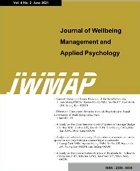- 권한신청
- E-ISSN2586-6036
- KCI
5권 1호
초록
Abstract
Purpose: This study aimed to investigate spatial and temporal features of motor control in an individual with hemiparesis during the curvilinear gait (CG) and proposed an exercise guideline. Research design, data and methodology: An individual aged 63 with hemiparesis by stroke disease was participated in the study. Autoencoder (AE) was used to extract four motor modules from eight muscle activities of the paretic leg during CG. After extraction, each module of four modules was operationally defined by numbering from M1 to M4 according to spatial and temporal features and compared with results reported in a previous study. Results: As a result, an individual with hemiparesis had motor module problems related to difficulty of weight acceptance (module 1), compensation for the weakness of ankle plantar flexor (module 2), a spastic synergistic pattern (module 3) and difficulty with transition from the swing to stance phase (module 4) in terms of spatial features. Also, a delayed activation timing of temporal motor module (module 2) related to the forward propulsion during CG was observed. Conclusions: Gait rehabilitation for the stroke will need to consider clinical significances in respect of the deterioration of motor module and provide the tailored approaches for each gait phase.
초록
Abstract
Purpose: The purpose of this study is to develop a kimchi recipe for immunity enhancement using snow crab, which has high food value in the era of COVID-19. Research design, data and methodology: The snow crab kimchi manufacturing method of this study includes the steps of preparing a kimchi seasoning containing snow crab seasoning and chitosan powder. Kimchi seasoning is made by adding 5 parts by weight of crab seasoning and 1 part by weight of chitosan powder to 100 parts by weight of the basic kimchi seasoning prepared by mixing radish, minced garlic, minced ginger, onion juice, anchovy sauce, red pepper powder and glutinous rice paste. Results: It was possible to develop new flavors, possibilities and characteristics of snow crab kimchi by extending the health and functional effects, taste, and preservation period without significantly changing the unique manufacturing method, taste and function of kimchi, including snow crab. Conclusions: Snow crab kimchi was excellent in taste and aroma while enhancing the health functions of the body, such as improving people's immunity. The developed snow crab kimchi manufacturing method can not only improve people's health, but also expand the choice of preference for kimchi taste and shelf life.
초록
Abstract
Purpose: This study investigated the effects of perfume purchasing behavioral factors on purchase satisfaction with 328 adolescents. Conclusions: In conclusion, it was found that among the six factors affecting purchasing behavior of perfume, the variables that had a statistically significant effect on purchase satisfaction were internal pleasure-seeking (p.<001) and fashion-seeking (p.<001). This is thought to affect purchase satisfaction by reflecting attractive images, favorable feelings, and pleasure by using perfumes preferred by adolescents. In addition, it is thought that the psychological characteristics of adolescents who want to follow trends while pursuing trends when purchasing perfumes are reflected.
초록
Abstract
Purpose: This study was conducted to investigate the effects of change in the unstable support surface location during bridge exercise on the muscle activity of erector spinae and gluteus maximus. Research design, data and methodology: 12 healthy participants aged 23.32 ±1.02 were measured muscle activities of erector spinae and gluteus maximus during bridge exercise and compared between the exercise conditions; unstable support surface located on upper back and feet during bridge exercise. Paired t-test was performed to identify whether there was a significant difference in the muscle activities between the exercise conditions. Results: As a result, even though higher levels of the averaged muscle activities of both erector spinae and gluteus maximus during exercise in unstable support surface located on feet than upper back were observed, no significant differences were found. Conclusions: The change of unstable support surface location during bridge exercise for low back pain rehabilitation would be more appropriate to be used to increase levels of tension of muscle activities and train fine motor control rather than to strengthening muscle strength.
초록
Abstract
Purpose: This study examines the history of the evolution of MS analysis and intends to consider the future direction of technological development through the difference from the latest technology, SIFT-MS. Research design, data and methodology: A method of analysis will be described in detail at the below by SIFT-MS (Selected Ion Flow Mass Spectrometry), which is a technology developed by a company called SIFT Technologies. Results: The initial concept of mass spectrometry was begun in the late 1890s, and it continues to evolve even after the 21st century through the ripening stage of the 20th century. The development process of mass spectrometry by year has been described in detail in the Main text. Conclusions: Mass spectrometry, qualitative and quantitative analysis of substances plays a very important role in the research and medical fields. The development of these analytical methods is expected to continue in the future, and faster and more accurate qualitative analysis and mass spectrometry will be developed than the level currently reached. In addition, it is expected that hardware and software will be configured so that non-analysis experts can handle it easily, and it will be used as a technology that is more closely related to our lives.














